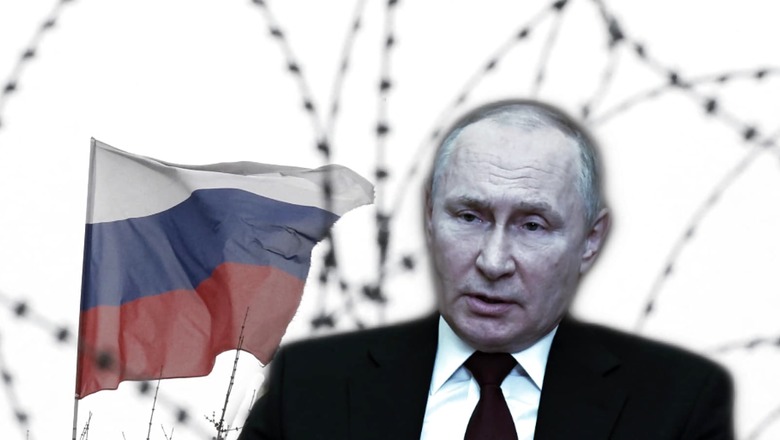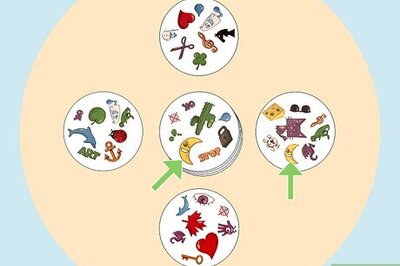
views
While a lingering assessment of the war in Ukraine remains that Russia’s military advance has been a painstakingly slow one in the face of unforeseen Ukrainian resilience, a realistic overview of the war presents the conclusion that Russia is winning the war. The fact remains that Ukrainian defences have maxed out and Russia has still not brought out the big guns. The Kremlin claims that it is trying to avoid civilian casualties and loss of property as much as possible. But things may speed up in the days to come and the war may become more intense.
In fact, sources close to affairs in Moscow say that the live conflict in Ukraine is not expected to continue beyond a week. They are also confident that Nato will not act against Russia and the United States will continue to pay lip service to the Ukrainian leadership, paving the way for the endgame in the Russia-Ukraine War.
Russia’s unprecedented gains
On February 24, Russia invaded Ukraine after announcing a ‘military operation’ to ‘demilitarise’ and ‘denazify’ the Eastern European country. In only about ten days of the invasion, large swathes of strategically crucial Ukrainian territory have fallen to the Russians and the capital Kyiv remains under siege, just hours away from falling— in what is a question of when, not if.
Ukraine is splintered from the East, North and the South, and what is hardly discussed among optimistic circles cheering the Ukrainian response is that Russian forces have virtually cut Ukraine off from the Sea of Azov, in a region where Ukrainian forces were exceptionally disadvantaged in the face of Russian advances approaching north from Crimea and southwest from Donetsk and Luhansk. Mariupol, a city on the coast of the Sea of Azov, and the bastion of the infamous neo-Nazi Azov Battalion of the Ukrainian National Guard, has been encircled by Russian forces and is facing a blockade at their hands.

In the northeast, Kharkiv has virtually fallen to the Russians. Europe’s largest nuclear power plant has fallen in Zaporizhzhia, a crucial Ukrainian asset on the Dnieper, providing over half of Ukraine’s nuclear power accounting for 20% of its electricity. In the South, Russia’s gains have not remained limited along the coast of the Sea of Azov, but in the northwest of Crimea as well where Kherson, a crucial Black Sea port, has become the largest Ukrainian city to have fallen to the Russian forces. Further west, Odesa is the last major Ukrainian bastion holding the fort on the Black Sea coast and the battle for it is currently on. Ukraine is on the verge of being cut off from the Black Sea entirely, limiting the fight to land and air conflicts thereon.
Perplexing underuse of Russian firepower
One notable question arising out of the war in Ukraine is why Russia has not established air dominance over the country and why its airforce has been largely missing in action and not confronting the Ukrainian airforce. One claim is that Russian jets do not fare well in the face of surface-to-air missiles and that Russians are bad at conducting complex air missions. Nonetheless, it appears that Russia does not wish to expend its jets on the frontlines just yet and may actually be intending to prevent collateral damage to life and property, including its own jets and pilots.
As reckless and unplanned as it may seem, Russia’s military advance into Ukraine actually started as a tactical one— clinically targeting Ukrainian defence infrastructure, surrounding and blockading major cities, and avoiding residential areas. In places like Kharkiv and Kherson, intense fighting has not left even residential buildings unspared. However, Russia’s use of firepower is relatively subdued compared to its actions in Syria while fighting ISIS and other anti-Assad militias. This may not last long as the endgame nears and Russia’s patience with Kyiv runs out.
Nato’s act of desertion
Nato’s reaction to Russia has been toothless, to say the least. After having dangled the possibility of a Nato membership, blinding Ukraine’s judgement of its own standing and propping it up against Russia, Nato has refused to impose a no-fly zone in Ukraine, fearing being dragged into the war with Russia. Nato countries have only sent arms to Ukraine to console their own public at a time when Ukraine’s defences are overwhelmed and crumbling— running on the last bit of manpower and relying on civilian resistance. The urgency with which the United States and other European nations ruled out the chance of directly fighting Russian forces and rescuing Ukraine has only buttressed Moscow’s assessment that the West has checked out on Ukraine, and hence, bolstered its confidence.
The reaction of the global markets has also encouraged the Kremlin. The invasion was expected to trigger an enduring downward spiral but this may not be the case after all. The invasion was followed by a worldwide dip, but the markets soon showed signs of recovery based on the opportunity to buy, backed by a sentiment that banked on the inaction of the West among other reasons. The event reflected that an escalation between Nato and Russia, a spillover from Ukraine, is not anticipated and only momentary volatility and no long-term consequences would be visible on the bourses.
According to sources close to affairs in Moscow, Russia has also come to a tacit understanding with Turkey which has agreed not to shut Russia out of its airspace. Turkey, a Nato member, has also refused to join in on the sanctions frenzy of its Nato comrades.
Also Read: The West Failed Ukraine. It’s a Warning Sign For Taiwan As China Takes Cue From Russia
Moreover, Russia seems to have priced in the sanctions triggered by the invasion and the short-term discomfort, while the European Union runs out of leverage. In fact, it is Russia that has held on to its gas export leverage on Europe and its capacity will only be boosted with its inevitable takeover of Ukrainian territories.
Sources in Moscow say that the Kremlin believes that the sanctions have in fact been brought in with a view to make room for negotiations and will be diluted with time.
The Biden Administration in the United States, meanwhile, is watching from the sidelines, having met the required levels of fear to bring back the Nato into relevance. Germany has vowed to cut back on Russian gas, step up its defence budget to finally meet the prescribed Nato targets and buy the American F35 fighter aircraft. What’s more enthralling is that Sweden and Finland are close to seeking a Nato membership.
The Endgame
For the next few days, all eyes are going to be on Kyiv as Russian forces wait at its perimeter to trigger a surrender or mount an attack. A coup, toppling Volodymyr Zelenskyy’s government and installing a pro-Russia politician, such as former President Viktor Yanukovich, would be the ideal scenario for Vladimir Putin. Even then, a division of the country is imminent with eastern areas as well as its strategically crucial coastal territory being lost to Russia. In fact, the Russian advance may proceed to even Moldova, a tiny neighbour of Ukraine and an erstwhile Soviet nation facing its own Russia-backed insurgency from a breakaway state called Transnistria.
Russia could effectively knock two post-Soviet nations off the map, confident that it would invoke no military response from Nato. And as for Russia’s “military operation” in Ukraine — what is being projected as slow and ineffective now, may in retrospect, be seen as a rather quick and easy take over of a country whose population is more than a third that of Russia.
Read all the Latest Opinion News and Breaking News here




















Comments
0 comment